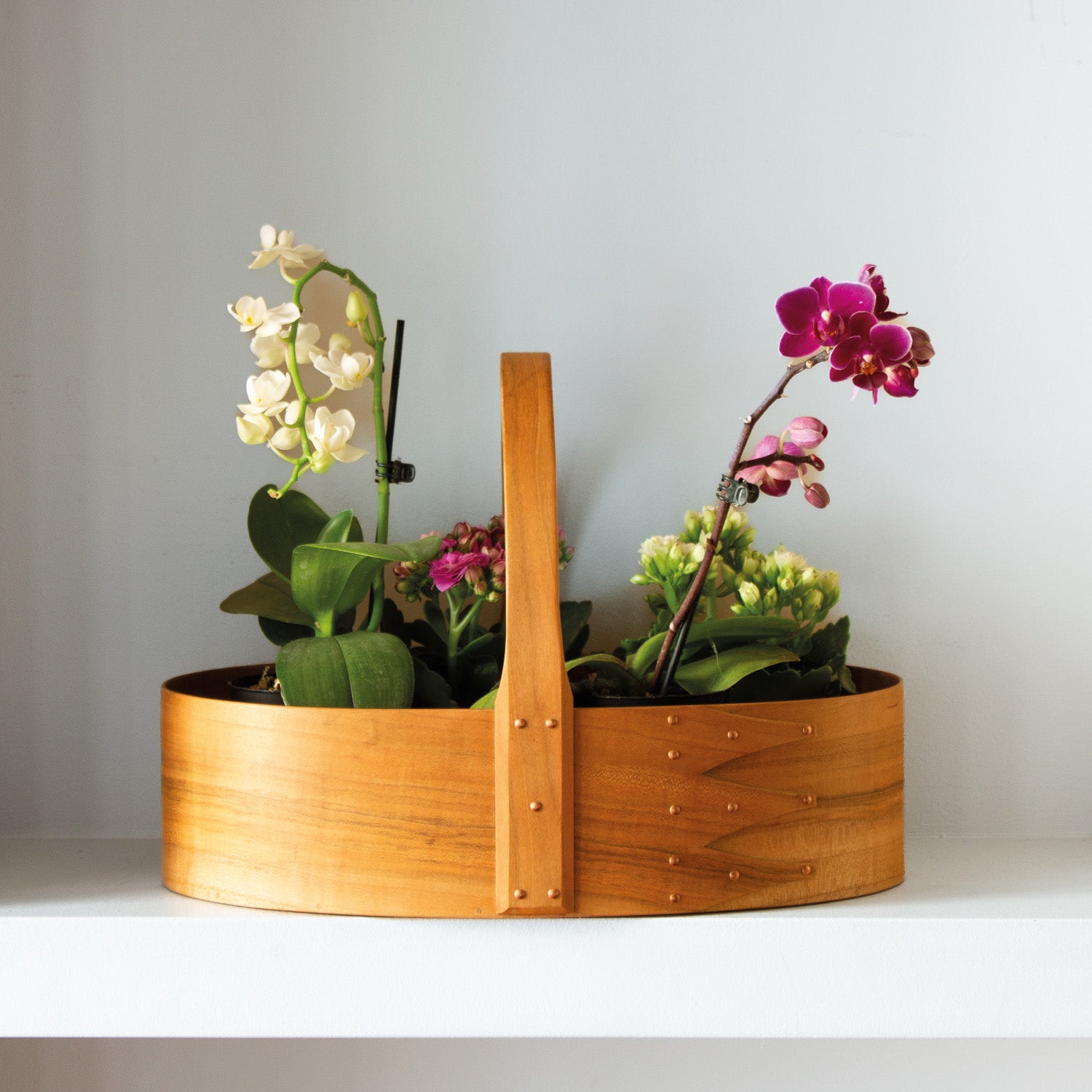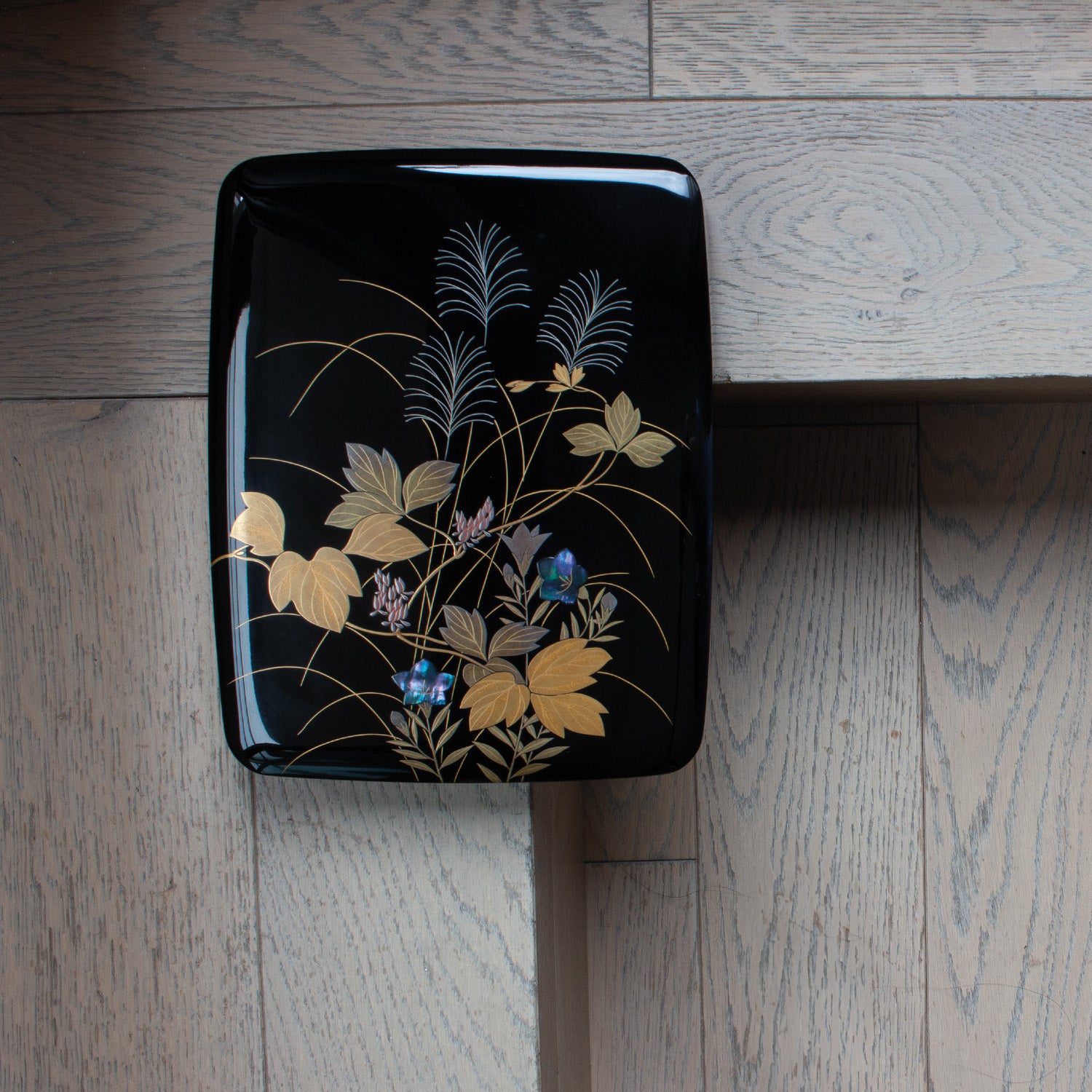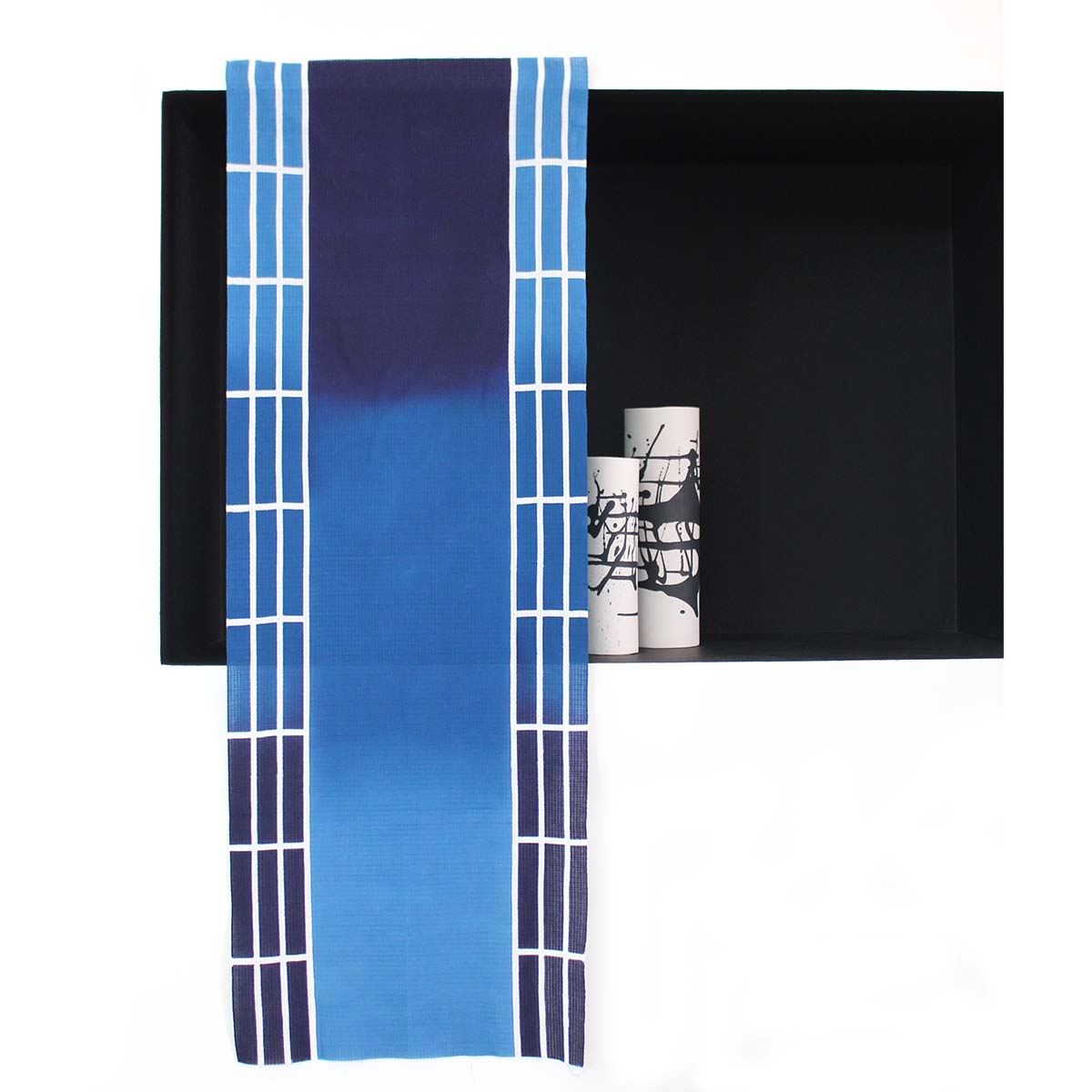
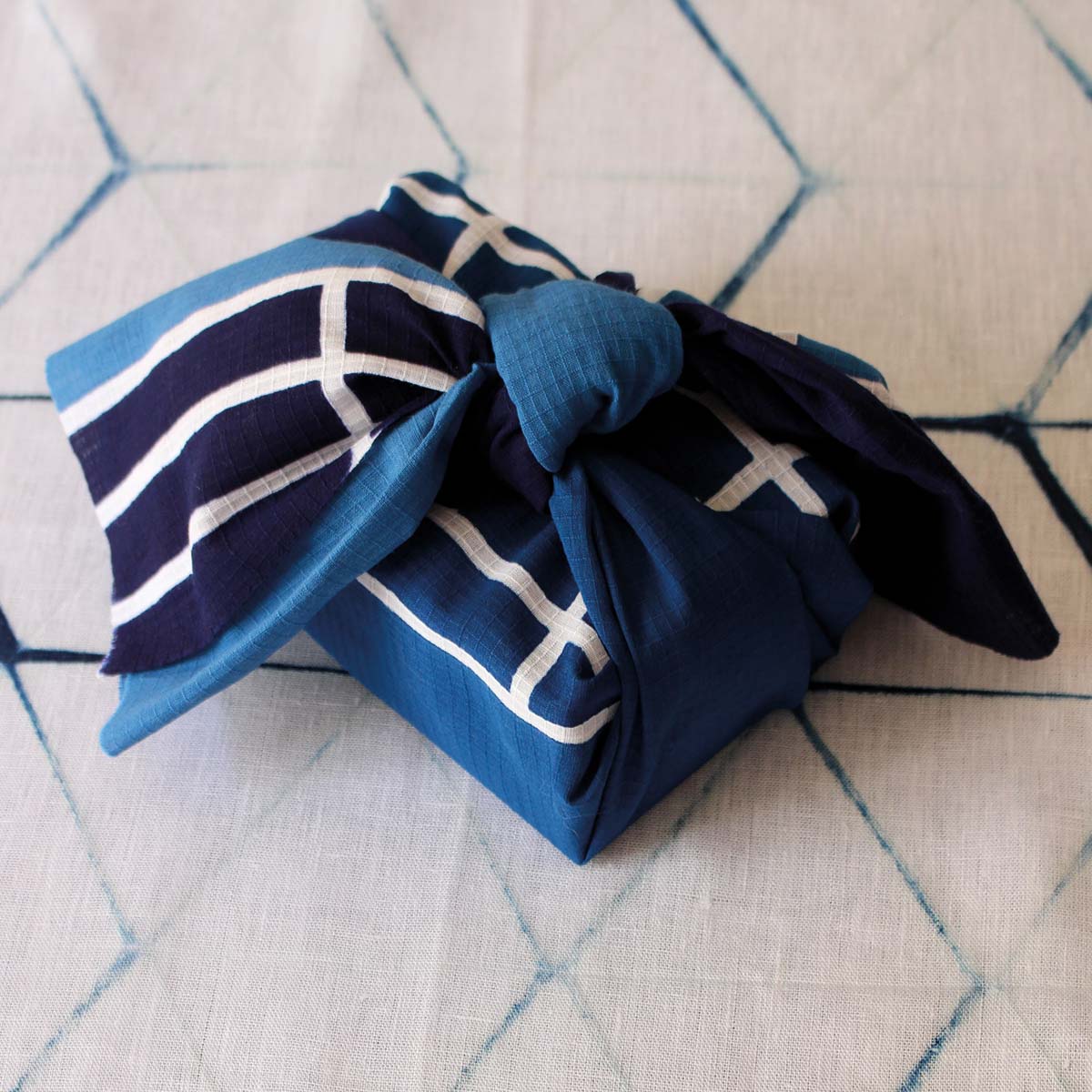
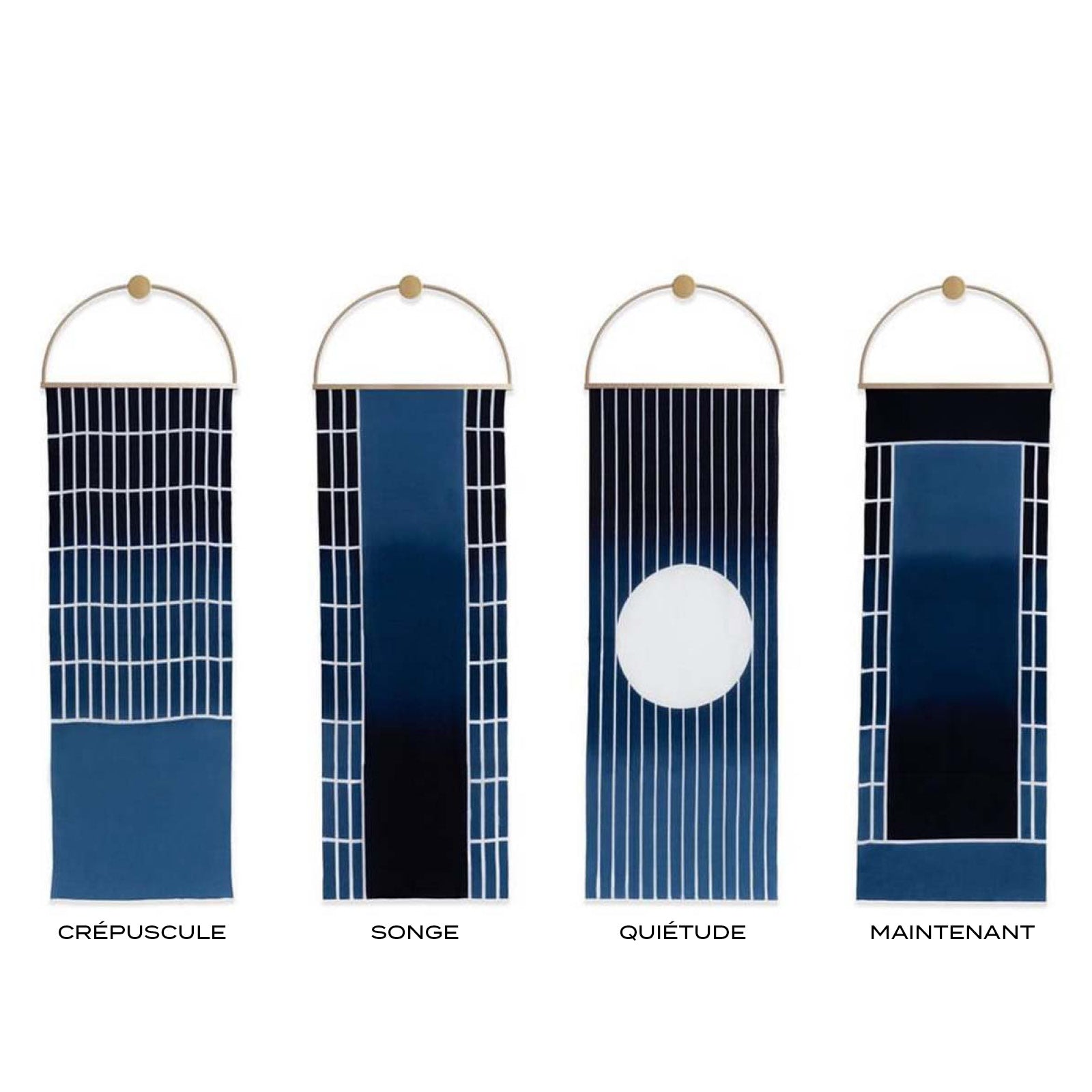
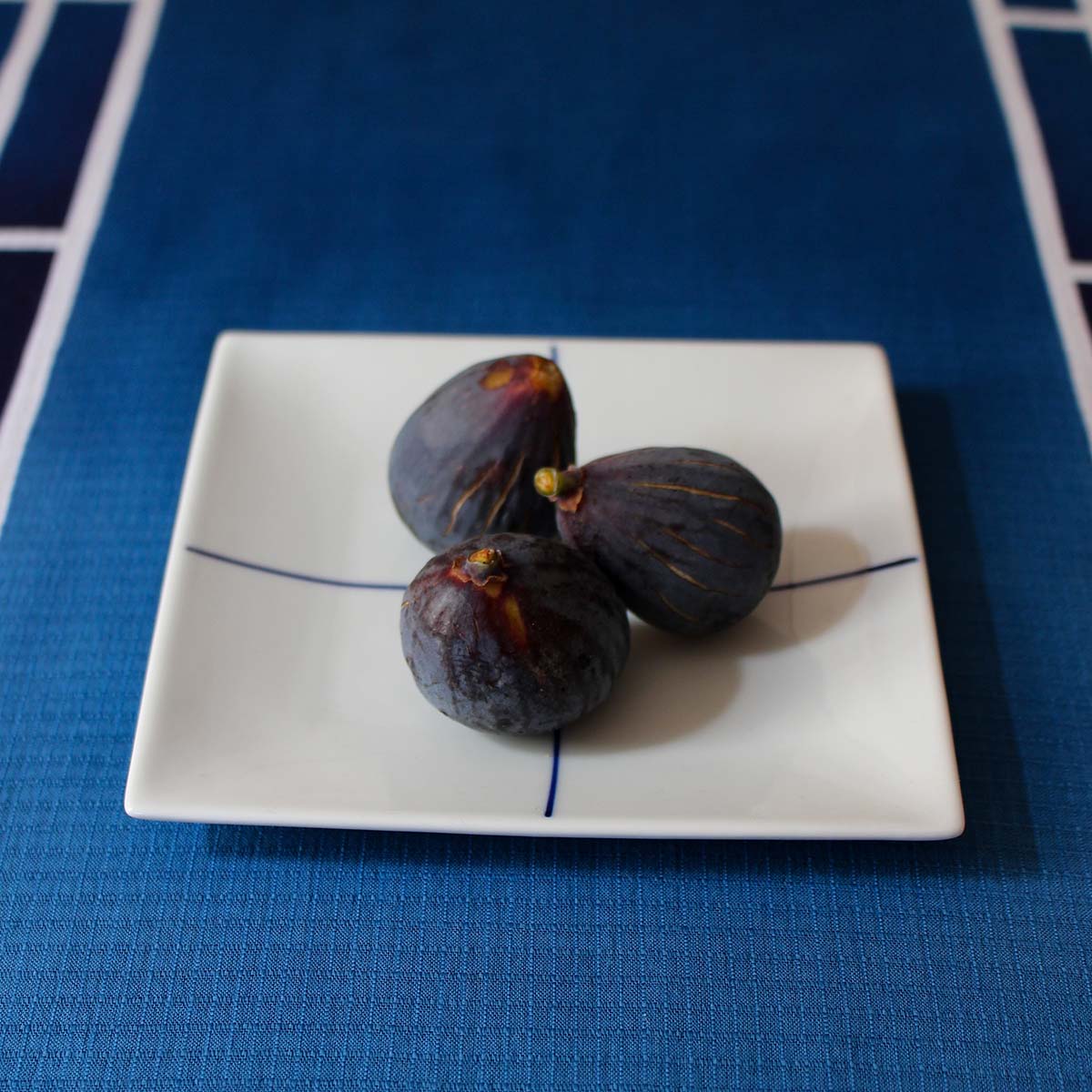

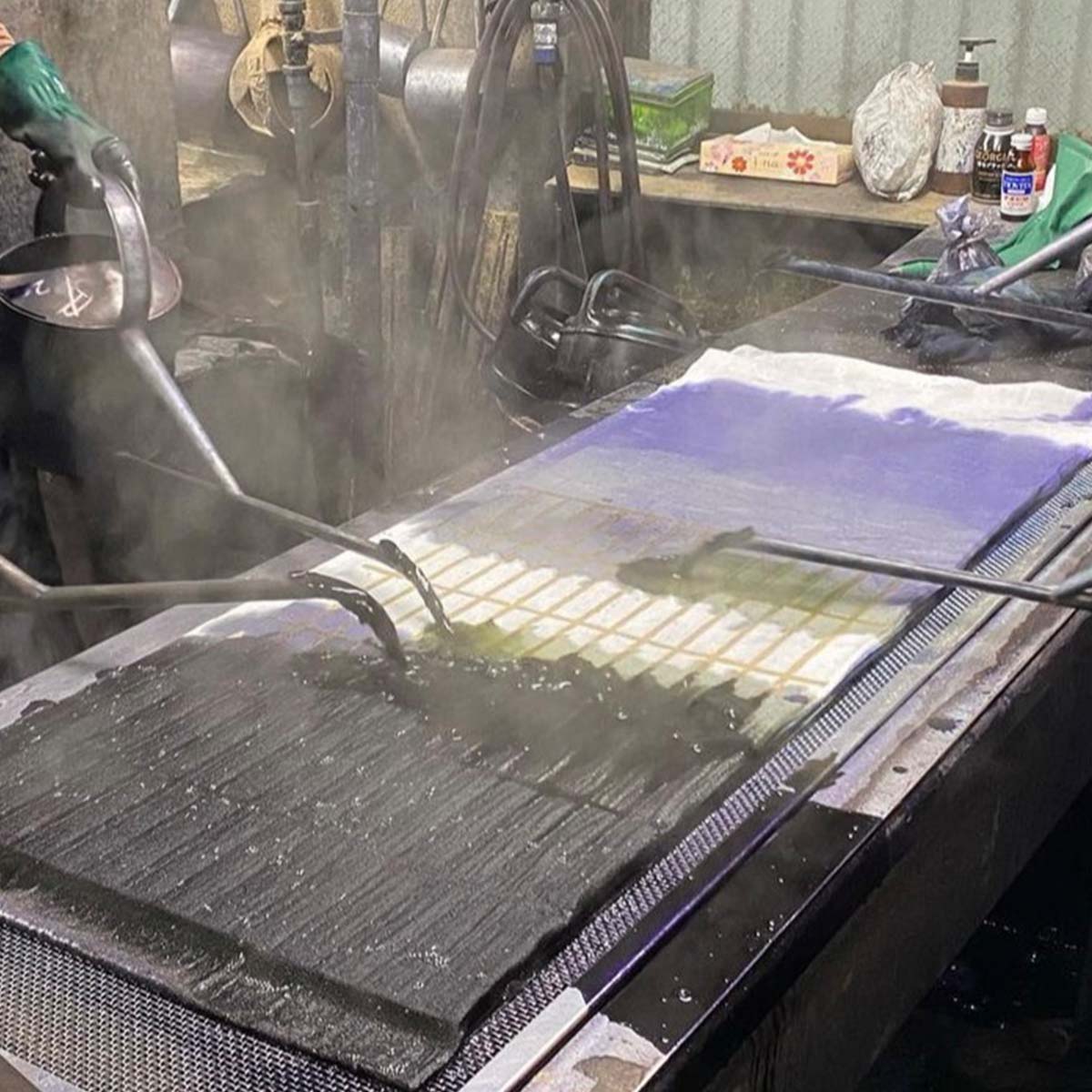
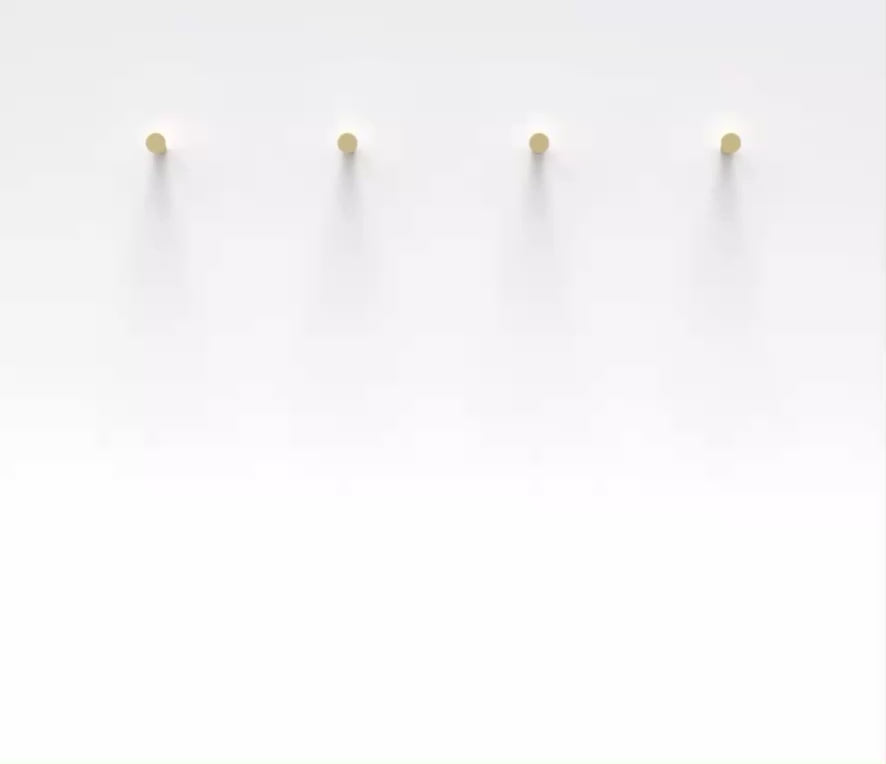
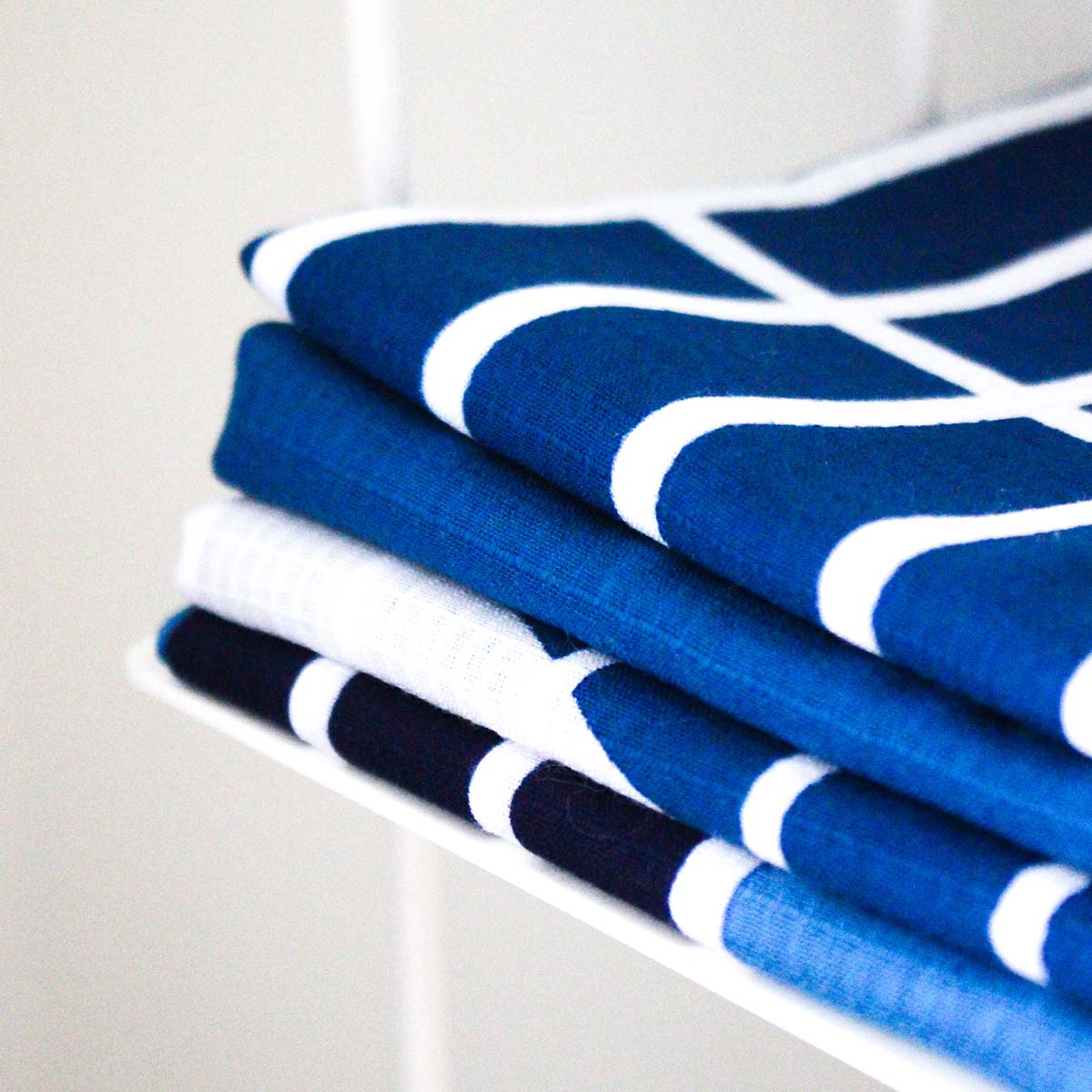
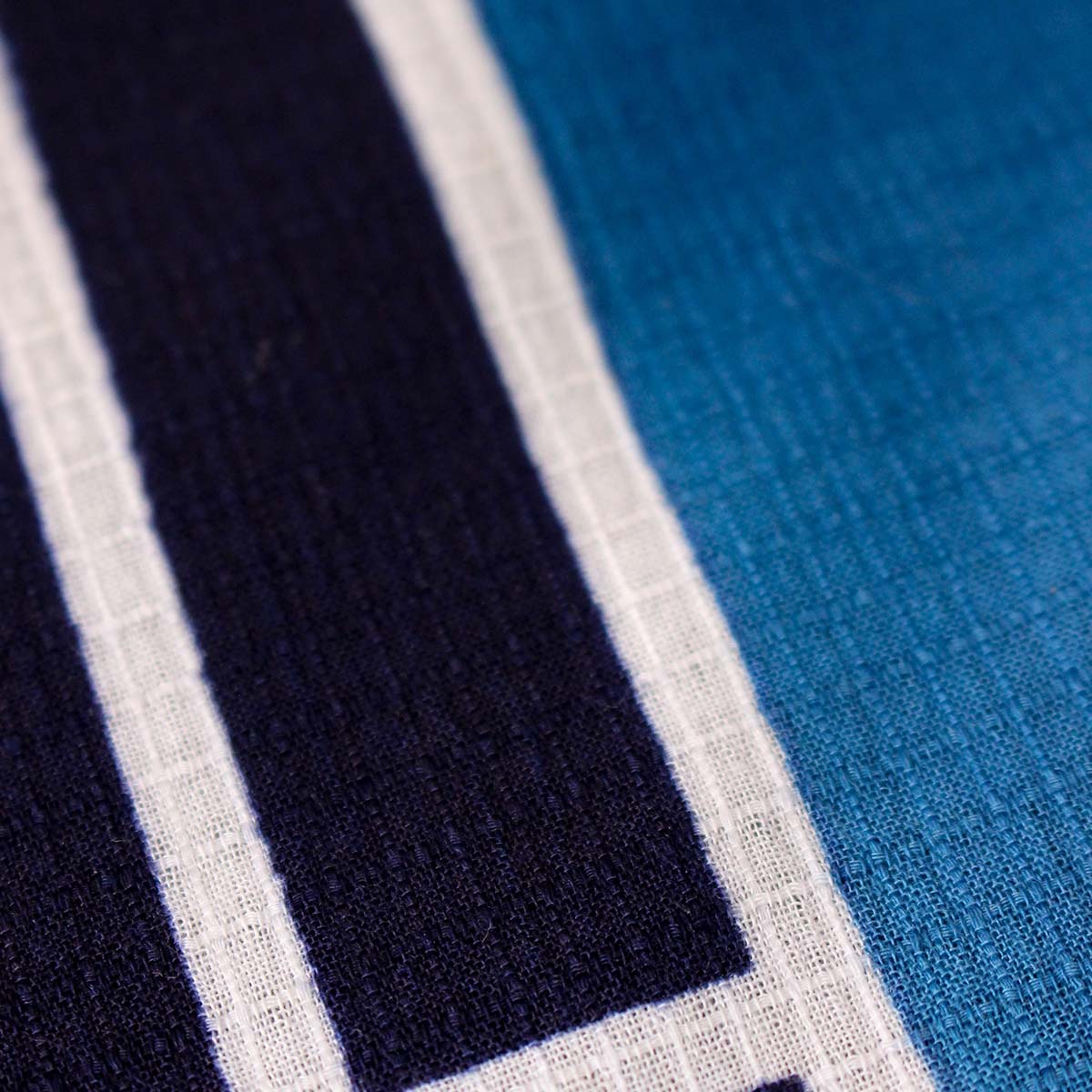
Limited Edition: Tenugui, "Songe" pattern, a Marukyu Shoten x Pauline Androlus collaboration
"Songe" is one of 4 designs from the "Échappées Belles" series, imagined by Pauline Androlus (Paris) and produced by Marukyu Shoten (Tokyo) for the Edo Tokyo Kirari project.
Japanese tenugui are light cotton textiles with a very versatile use. This series is exceptional, its patterns were designed by Pauline Androlus, a talented French designer of objects and interiors, and it was made by the craftsmen of Marukyu Shoten, a Tokyoite company founded in Nihonbashi in 1897, manufacturer of yukata (summer kimono) and tenugui with the artisanal technique of chusen, which consists of dyeing the textile by creating patterns by reserve using a thick paste. The technique is very complex and is carried out by hand, allowing for a print on both sides of the fabric.
The pattern is inspired by windows and shoji that open up and invite to daydream, an abstract painting sublimated by the gradations of blue and the white of the fabric.
These tenugui are made of very light cotton, drying extremely quickly, with time bringing even more softness and depth. Their size is typical of Japanese tenugui: a rectangle of 40cm by 110cm, allowing a multitude of uses. Here are the ones I recommend, given the quality of this project:
- On a wall (framed or held with wooden edges), as a sublime abstract work of art, choosing several models from the series positioned side by side.
- As a face-to-face table runner for a striking contemporary contrast (maximum table width 90cm, not suitable for round tables).
- As an elegant furoshiki to wrap gifts or objects in style
- As a light scarf or hairband
- Of course, traditionally tenugui can also be used as a napkin or tea towel, which is also very good!
Attention, this is a limited edition. See the other 3 designs.
| PLACE OF MANUFACTURE | JAPAN |
| DIMENSIONS | Length 110cm - Width 40cm |
| WEIGHT | 50gr |
| TECHNIQUE | Hand-made double-sided chusen dye. |
| MATERIAL | 100% cotton |
In Meiji era, the beginnings of Chusen dyeing:
Summer yukata kimono and tenugui dyed in brightly coloured patterns were items that appeared in everyday life during the Meiji period (1866-1912). A wide variety of fabrics launched on the market thanks to the birth of a stencil dyeing technique unique to Japan: chusen. Founded in Nihonbashi in 1899, Marukyu Shoten (through its brand Shinedozome) continues to produce a superb range of chusen textile products.
Handcrafted with a modern twist:
The chusen dyeing process begins with a paper pattern that is used to apply a dye-resistant paste, called resist, to a piece of fabric. The pigment does not seep into the areas covered by the resist, which means that they are not dyed. Once this stage is complete, the pattern is removed and the fabric is folded to reveal a new section on top. The pattern is positioned on this new section of fabric, and the resin is applied once more. This process is repeated until 20 to 40 layers of fabric are created. The resin is then applied to create barriers that separate areas where a different colour is desired. Then, using a yakan, which looks like a watering can, the pigment is poured into the areas marked by the dams according to the pattern. A vacuum pump that works from underneath the fabric is used to draw the dye through all the layers simultaneously. The fabric is turned over and the same process is repeated on the other side. This is what gives chusen textiles their distinctive dyed look, with no wrong or right side.
CARE:
Hand wash with possibly a little marseille soap and in lukewarm (or cold) water, let air dry, without direct contact with the sun. The colours will change over time, this is the normal process of hand-dyed textiles. Wash them separately from other textiles.
On its small width a tenugui is never hemmed or stitched, which allows it to dry quickly. Just cut the few weft threads that fray at first with a pair of scissors. The edges will then stabilise and not fray any more.
Shipping costs will be calculated and added during the checkout process. More information on these costs can be found in the drop-down menu below.
DELIVERY
Delivery
Free delivery in mainland France for purchases over €200. Orders are generally dispatched within 2 working days, except in special cases, as indicated in the banner at the top of the website.
Precious objects are wrapped in a cloth tied according to the precious Korean art of pojagi. Some exceptions apply, particularly if the objects are large. Learn more >
Detailed delivery information is available via this link >
Your invoice will be sent by email
Payment methods
By card (Stripe operator): Visa, MasterCard, Discover, American Express.
Secure card payment with 3D Secure.
By PayPal, Apple Pay, Google Pay and Shop Pay
Returns and exchanges
14 days to change your mind.
Choose options
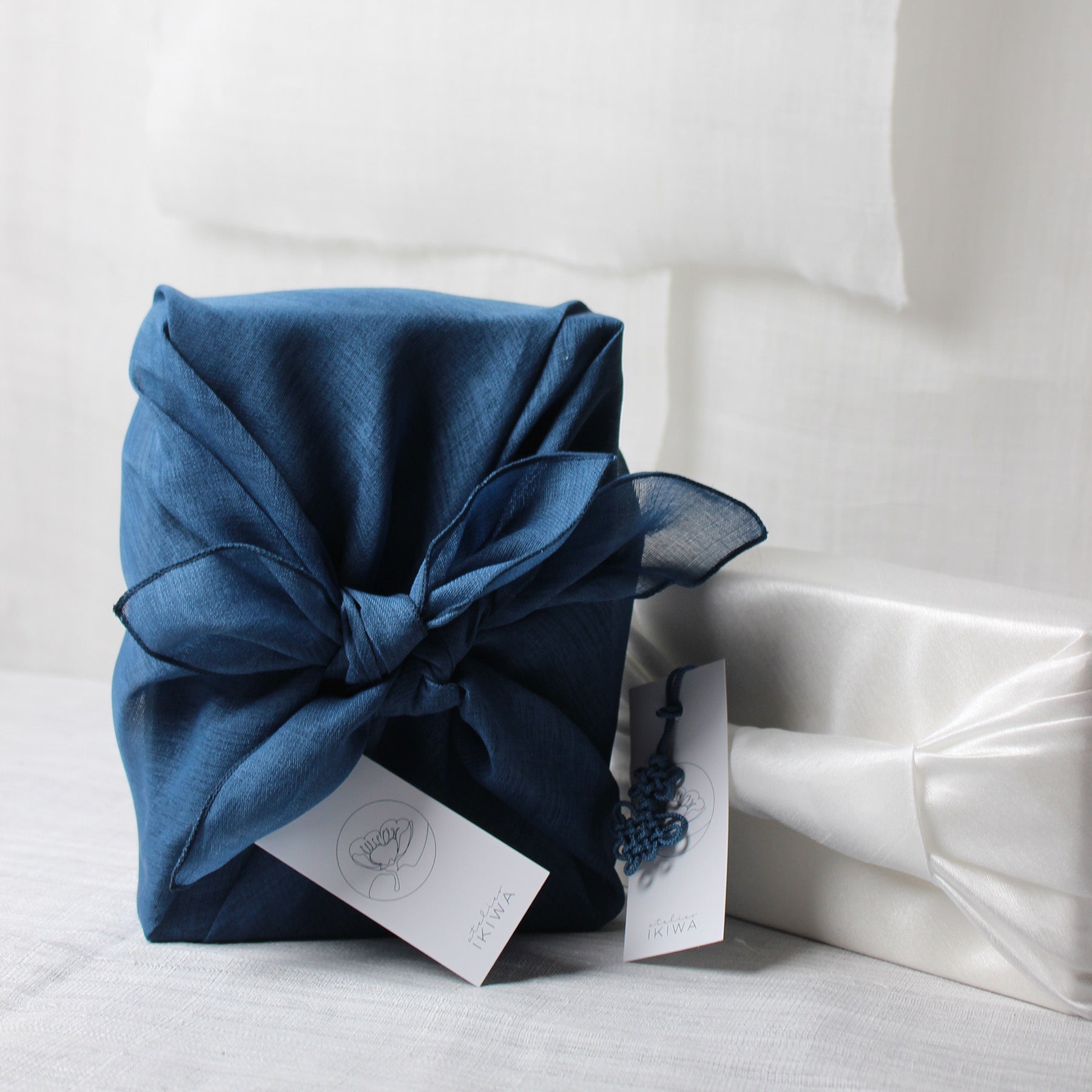
The art of wrapping
The precious objects are wrapped in a beautiful cloth beautifully tied according to the little-known art of Korean pojagi. Details and conditions >


